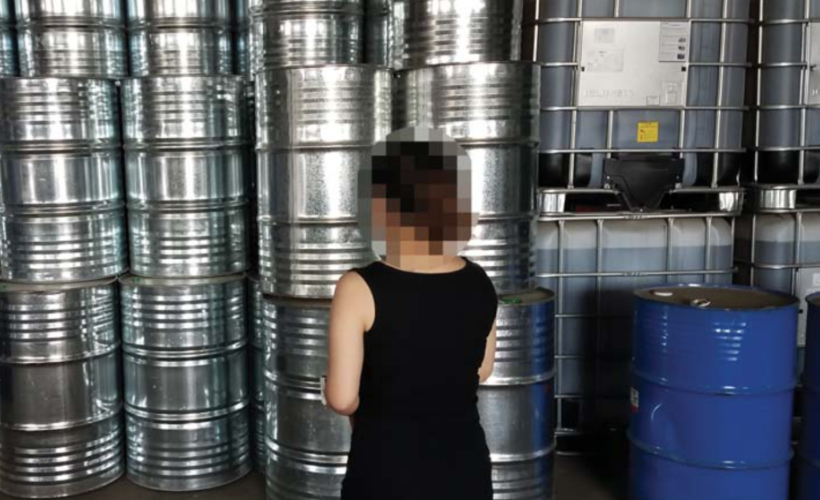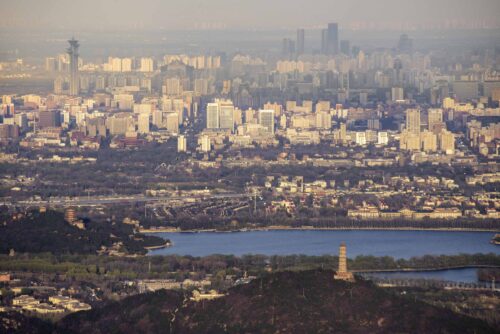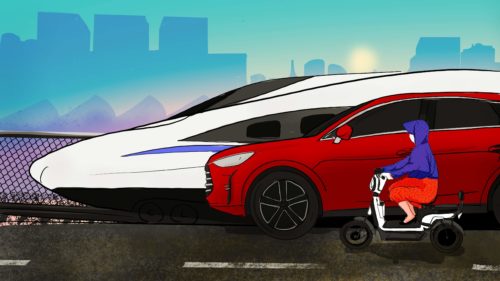Reports confirm ozone-killing substance in Chinese factories

A new report from the Environmental Investigation Agency, a UK-based nonprofit, has confirmed the concerns of experts that a buildup of the banned substance CFC-11 in the atmosphere is traceable to factories in China.
CFC-11, also known as trichlorofluoromethane, is an ozone-depleting gas banned under the 1987 Montreal Protocol. The treaty provides a framework for phasing out harmful substances to protect the ozone, which filters out harmful ultraviolet radiation associated with “skin cancer and cataracts, reduced agricultural productivity, and disruption of marine ecosystems,” according to the U.S. State Department. CFC-11 is considered particularly dangerous given that its global warming potential is 4,750 times higher than that of CO2. According to the protocol, developed countries stopped CFC-11 production in 1996, with developing countries following in 2010.
In May, American scientists published a study examining CFC-11 levels from 2012-2016 that detected an increase in CFC-11 emissions, prompting investigators to search for the source. The New York Times reported in June that interviews and documents confirmed the scientist’s initial suspicion that emissions originated from factories in China. One factory owner featured in the article summarized his reasoning for using the banned substance, “You had a choice: Choose the cheaper foam agent that’s not so good for the environment, or the expensive one that’s better for the environment…Of course, we chose the cheaper foam agent…That’s how we survived.”
The EIA report, however, lays clear the consequences of using this substance. The report states that should illegal CFC-11 use continue in China unabated, “total CFC-11 emissions between 2012 and 2022, based on the expected growth of the industry, would amount to over 148,000 tonnes and 702 million tonnes (MT) CO2e [‘carbon dioxide equivalent,’ which measures carbon footprints]. This is equivalent on average to the CO2 emissions from 16 coal fired power stations each year.” These emissions levels pose a significant threat to global action on climate change.
The investigation found that CFC-11 is being used in China to produce rigid polyurethane foam, a component used to insulate refrigerators, freezers, and other temperature-controlling products. CFC-11 itself is used as a “foam blowing agent for the manufacture of molded foam panels and spray foam used for insulation purposes.” The study found 18 factories in geographically dispersed locations throughout China that confirmed using CFC-11, nearly all of whom stated the substance was used in the majority of their production.
Many of those who use CFC-11 have mastered the art of going undetected or ensuring that detection does not compromise their business. Factories will keep stockpiles of CFC-11 and mislabel them as another substance to avoid inspection from local police. One factory owner recounted having “connections” with local officials who could warn him to shut down his factory before police checks. Another described how he managed to subvert customs inspections on products in the wake of a crackdown on environmentally damaging substances such as CFC-11:
“We get those big lumber core boards, build up a container for four barrels of [white agent] and seal it carefully. Nobody at the custom would open it up. Seriously, how can anyone do inspections on that? We also spread putty on those containers to make it really messy. No one cares to take a look.”
Factory owners and managers often explained that they used CFC-11 because it was cheap and effective in producing insulating materials, but other factors may have pushed producers to ignore regulations from the Montreal Protocol. An uptick in Chinese regulations regarding fire retardants and energy-efficient building insulation may have favored CFC-11 — a relatively fireproof substance with high insulating capacity. Additionally, violating laws on CFC-11 can carry a hefty fine depending on the nature of the violation, but does not include more severe punishments such as jail time.
Elaborating on the government’s challenges with regulating CFC-11, one official in Shandong Province called this production “highly concealed” and mentioned that “evidence is hard to obtain,” leaving prosecutors ill-equipped to bring violators to justice. An environmental agency in Shandong provides additional details on the workings of these firms, making them hard to pursue.
“These enterprises generally lack well-performing facilities and thorough management. Their production is damaging to the ozone, soil and underground water. These enterprises usually locate in remote places. They are unlicensed and don’t even have a name. Some of them move regularly, making it challenging for acting government agencies to act oversight.”
The covert nature of CFC-11 in China underscores the need to face the challenges inherent in eliminating this substance to protect ozone health. The Montreal Protocol and its parties can work to provide an environment conducive to the treaty’s goals, but CFC-11 reduction ultimately will require political will within China to become a reality.





